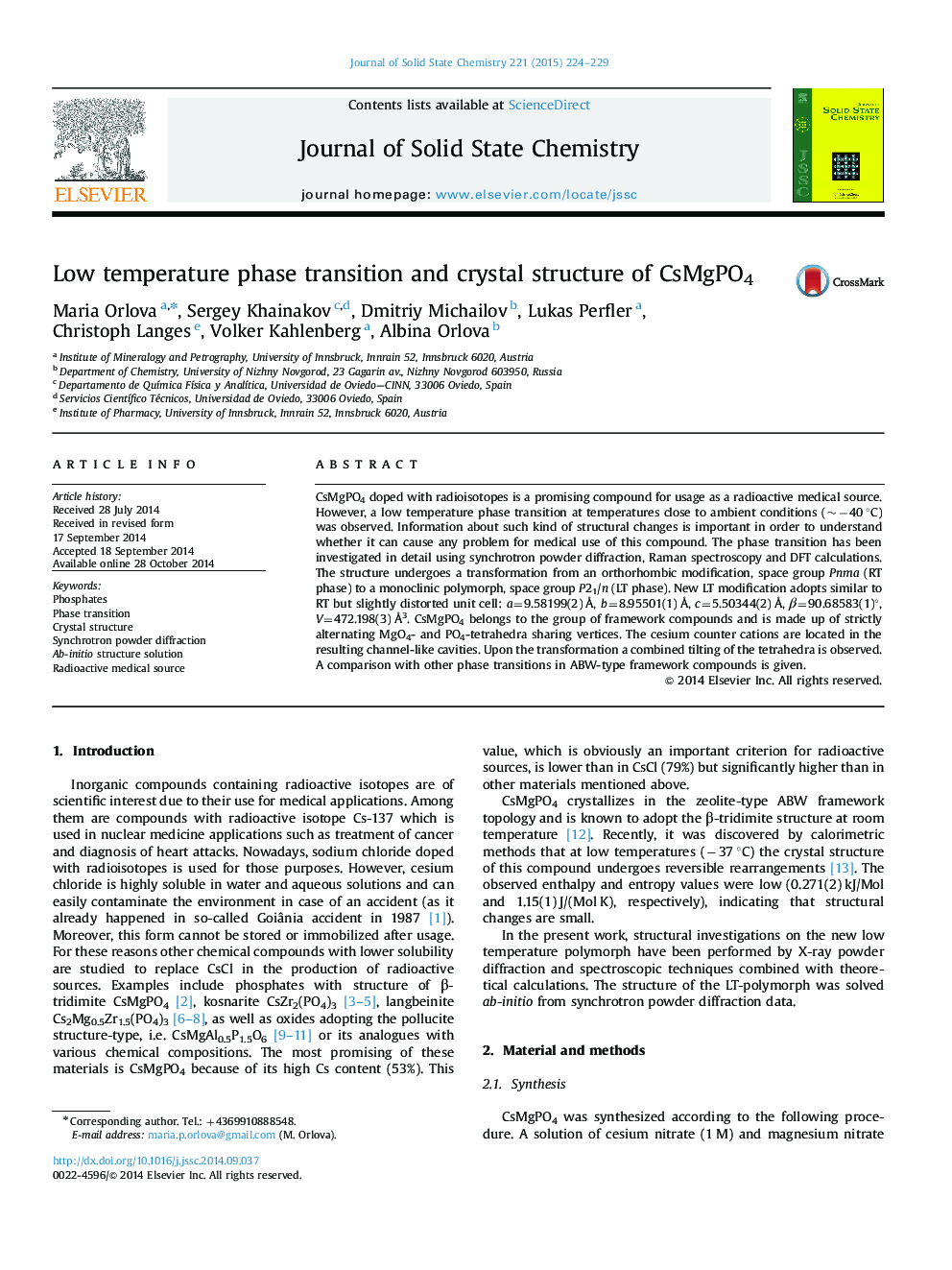| کد مقاله | کد نشریه | سال انتشار | مقاله انگلیسی | نسخه تمام متن |
|---|---|---|---|---|
| 1329627 | 1500095 | 2015 | 6 صفحه PDF | دانلود رایگان |

• β-Tridymite type phosphate CsMgPO4 undergoes so called translationengleiche phase transition of index 2 at −40 °C.
• The structure transforms from an orthorhombic (space group Pnma) to a monoclinic (space group P21/n) phase.
• In comparison with the RT form, the LT modification adopts a similar but slightly distorted unit cell.
CsMgPO4 doped with radioisotopes is a promising compound for usage as a radioactive medical source. However, a low temperature phase transition at temperatures close to ambient conditions (~−40 °C) was observed. Information about such kind of structural changes is important in order to understand whether it can cause any problem for medical use of this compound. The phase transition has been investigated in detail using synchrotron powder diffraction, Raman spectroscopy and DFT calculations. The structure undergoes a transformation from an orthorhombic modification, space group Pnma (RT phase) to a monoclinic polymorph, space group P21/n (LT phase). New LT modification adopts similar to RT but slightly distorted unit cell: a=9.58199(2) Å, b=8.95501(1) Å, c=5.50344(2) Å, β=90.68583(1)°, V=472.198(3) Å3. CsMgPO4 belongs to the group of framework compounds and is made up of strictly alternating MgO4- and PO4-tetrahedra sharing vertices. The cesium counter cations are located in the resulting channel-like cavities. Upon the transformation a combined tilting of the tetrahedra is observed. A comparison with other phase transitions in ABW-type framework compounds is given.
Structural behavior of β-tridymite-type phosphate CsMgPO4, considered as potential chemical form for radioactive Cs-source has been studied at near ambient temperatures. A phase transition at (~−40 °C) has been found and investigated. It has been established that the known orthorhombic RT modification, space group Pnma, adopts a monoclinic cell with space group P21/n at low temperatures. In this paper, we present results of structural analysis of changes accompanying this phase transition and discuss its possible impact on the application properties.Figure optionsDownload as PowerPoint slide
Journal: Journal of Solid State Chemistry - Volume 221, January 2015, Pages 224–229